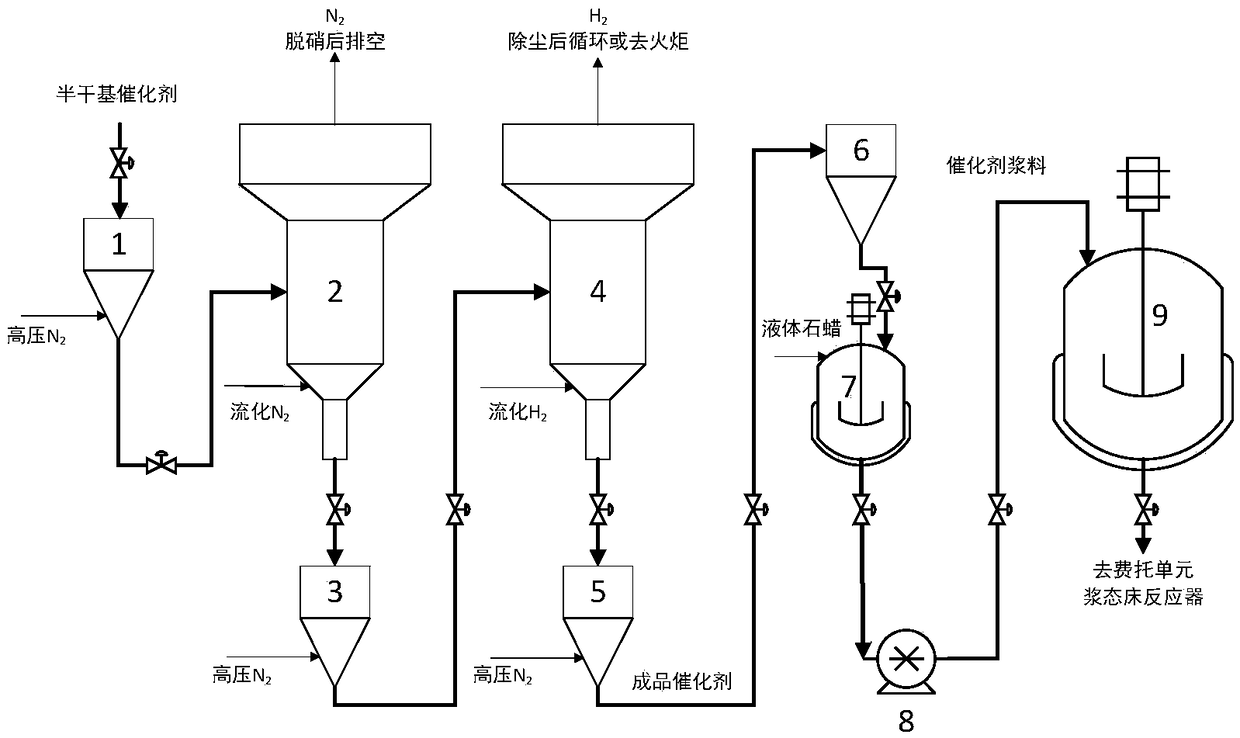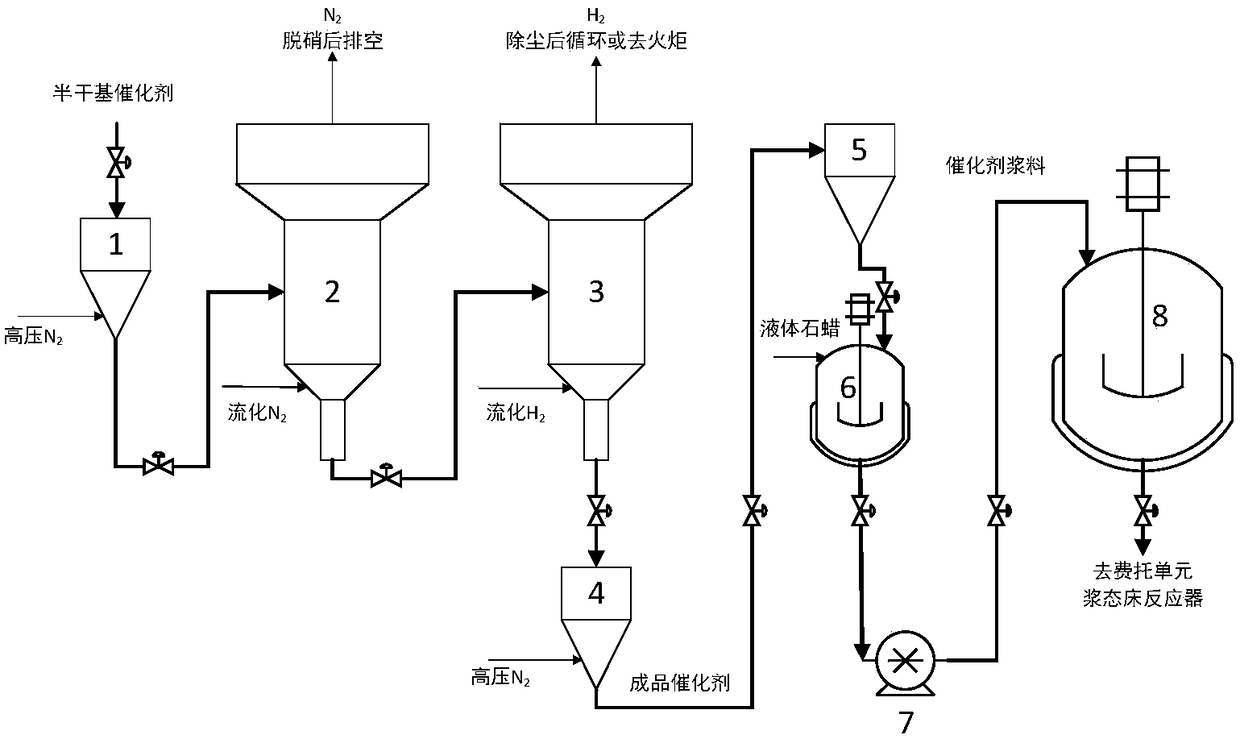Industrial roasting reduction method of cobalt-based slurry bed Fischer-Tropsch synthesis catalyst supported on activated carbon
A Fischer-Tropsch synthesis and catalyst technology, applied in chemical instruments and methods, catalyst activation/preparation, physical/chemical process catalysts, etc., can solve problems not involved in the preparation process, etc.
- Summary
- Abstract
- Description
- Claims
- Application Information
AI Technical Summary
Problems solved by technology
Method used
Image
Examples
Embodiment 1
[0017] According to the attached figure 1 The process proceeds. 10 tons of semi-dry base catalyst (the dry weight composition is equivalent to 6.4 tons of finished catalyst), containing 10% water, is added in the semi-dry base catalyst feed bin 1. Use high-pressure nitrogen to transport the semi-dry catalyst into the catalyst roasting processor 2, program temperature rise at 20-400°C, pressure 70kPa, nitrogen volume space velocity 1000h -1 After roasting for 100 h under the condition of superficial gas velocity of 0.1 m / s, it is discharged into the post-calcination catalyst silo 3 . The calcined catalyst is transported into the catalyst reduction processor 4 with high-pressure nitrogen, the temperature is programmed at 20-470°C, the pressure is 90kPa, and the hydrogen volume space velocity is 1000h -1 , after reduction for 100 h under the condition of superficial gas velocity of 0.1 m / s, it was unloaded into finished catalyst silo 5 and weighed to obtain 6 tons of finished c...
Embodiment 2
[0020] According to the attached figure 1 The process proceeds. 10 tons of semi-dry base catalyst (the dry weight composition is equivalent to 6.4 tons of finished catalyst), containing 10% water, is added in the semi-dry base catalyst feed bin 1. Use high-pressure nitrogen to transport the semi-dry catalyst into the catalyst roasting processor 2, program temperature rise at 20-400°C, pressure 70kPa, nitrogen volume space velocity 1000h -1 After roasting for 300h under the condition of superficial gas velocity of 0.1m / s, the high-pressure nitrogen gas is directly transported into the catalyst reduction processor 4, the temperature is programmed at 20-470°C, the pressure is 90kPa, and the hydrogen volume space velocity is 1000h -1 , after reducing for 300h under the condition of superficial gas velocity 0.1m / s, it was unloaded into finished catalyst silo 5 and weighed to obtain 5 tons of finished catalyst. The silo 5 needs to be fed with nitrogen continuously to keep the oxyg...
Embodiment 3
[0023] According to the attached figure 1 The process proceeds. 3 tons of semi-dry base catalyst (the dry weight composition is equivalent to 1.9 tons of finished catalyst), containing 10% water, is added in the semi-dry base catalyst feed bin 1. Use high-pressure nitrogen to transport the semi-dry catalyst into the catalyst roasting processor 2, program temperature rise at 20-400°C, pressure 70kPa, nitrogen volume space velocity 1000h -1 After roasting for 100 h under the condition of superficial gas velocity of 0.1 m / s, it is discharged into the post-calcination catalyst silo 3 . The calcined catalyst is transported into the catalyst reduction processor 4 with high-pressure nitrogen, the temperature is programmed at 20-470°C, the pressure is 90kPa, and the hydrogen volume space velocity is 1000h -1 , after reducing for 100 h under the condition of superficial gas velocity of 0.1 m / s, it was unloaded into finished catalyst silo 5 and weighed to obtain 1.8 tons of finished c...
PUM
| Property | Measurement | Unit |
|---|---|---|
| particle size | aaaaa | aaaaa |
Abstract
Description
Claims
Application Information
 Login to View More
Login to View More - R&D
- Intellectual Property
- Life Sciences
- Materials
- Tech Scout
- Unparalleled Data Quality
- Higher Quality Content
- 60% Fewer Hallucinations
Browse by: Latest US Patents, China's latest patents, Technical Efficacy Thesaurus, Application Domain, Technology Topic, Popular Technical Reports.
© 2025 PatSnap. All rights reserved.Legal|Privacy policy|Modern Slavery Act Transparency Statement|Sitemap|About US| Contact US: help@patsnap.com


